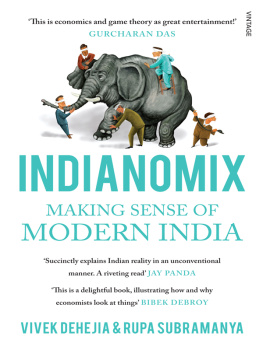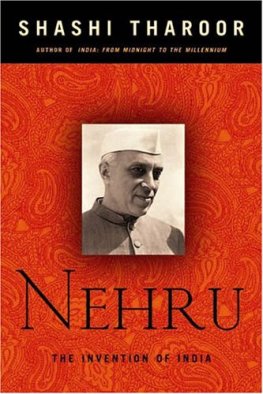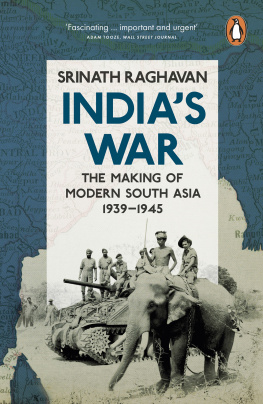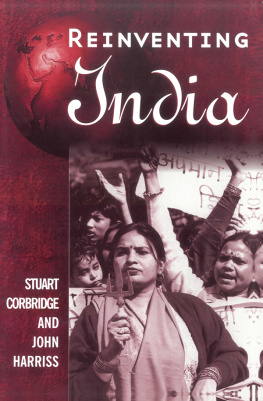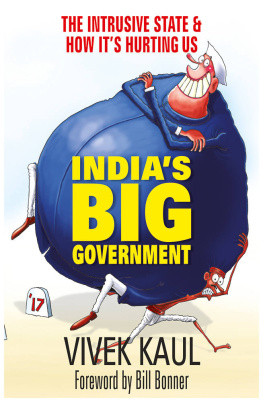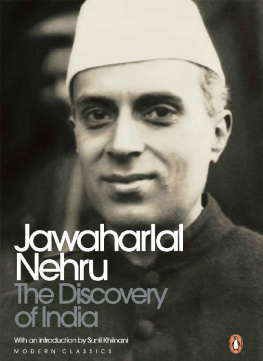Praise for Indianomix
Succinctly explains Indian reality in an unconventional manner. The authors use everyday examples to explain complex problems. A riveting read, indeedJay Panda
This is economics and game theory as great entertainment! Gurcharan Das
Anyone who thought economists were dull people wont do so after reading this book. [It] holds the readers attention like a Sherlock Holmes mysteryArvind Panagariya
A quirky, thoughtful little book that is sometimes provocative, often surprising and always interestingShashi Tharoor
A book which must certainly be read by anyone wanting to know what Indians are really aboutPavan K. Varma
Indianomix teaches you things you never knew, and makes you question the things you thought you knew well. An unusual, enjoyable India bookBarkha Dutt
Economics neednt be boring. Economics can be real, not abstract and esoteric. This is a delightful book, illustrating how and why economists look at things. It isnt just about India, it is also about how economics worksBibek Debroy
Manages to keep even the most economic-layman interested... cutting-edge and deep research offers a refreshing outlook... well-researched and easy to read book that will be adored by laymen who are not familiar with economicsAsian Age
Coherently brings together a host of research to help the reader make more sense of the worldBusiness Today
Fun reading... brings to the fore cutting-edge research in the fields of behavioural economics and experimental economics... and applies insights from them to understand several vexed real world problemsIndia Today
An essential read for those interested in the convergence of economics and psychology... a little gem of a book Sunday Guardian
[A] delightful book... a quintessentially Indian book that opens a window into India what makes it tick, what makes it err, what makes it success, what makes it gamble literally and figuratively. What makes the book so remarkable is that besides being a quirky introduction to India, it also doubles as a quirky introduction to economic theory. In the best traditions of reading, Indianomix is just never dullTehelka
In memory of Pa and Shobha akka, who both left this world far too soon
Introduction: Mind Games
I
Whoever coined the expression time waits for no man obviously never lived in India. Lets face it: except for rocket launches by our world-class space programme, that require coordination down to the last second, we Indians are notorious for our lack of punctuality. India has one time zone, five and a half hours ahead of Greenwich Mean Time (GMT). Its known as Indian Standard Time or IST for short. But in Indian slang, IST has an alternate meaning: Indian Stretchable Time. And some everyday Indian situations would certainly confirm that second meaning. You might invite people home for dinner at 8 p.m. but more than likely, they probably wont show up until 10 or 10.30 by which time you might be half asleep. (In fact, by now, weve perfected a system where between 8 and 10 we have a snack, take a refreshing nap, and are ready for our guests when they eventually arrive.) Our guests might be in flagrant violation of the official IST but are well within the bounds of the unofficial one.
We were acutely reminded of this difference between official and unofficial timings when we returned to India after several years in punctual, Protestant North America. Wed make an appointment with someone, say to meet over coffee at 12 noon, and we would navely show up at the stroke of 12 p.m. The other party wouldnt be there. Then, usually around 12.30, wed get a text saying that they were running late and would be with us soon. That would often stretch into another half hour.
Indeed, so engrained is the culture of tardiness in India, that its even led to a fashion statement. In 2011, Alok Nanda and Prasanna Sankhe launched the ISH (as in -ish) watch, inspired by Indian Stretchable Time. Designed by Sankhe, the watch doesnt feature the regularly spaced markings on the face representing hours or minutes. Rather, its got four markings, 12-ish, 3-ish, 6-ish, and 9-ish, and that, too, not placed exactly where they belong on the dial, but each one displaced to the right a little bit. Looking at the face of the watch, you can, roughly, tell what time it is, but you wouldnt use it to time a rocket launch, which is the point of Sankhes cheeky design. Sankhe told us that the watch has been selling magnificently well, and has even caught on abroad, as a fashion statement by those for whom being exactly on time isnt necessary or, indeed, might be unfashionable.
Are punctuality, and its flip side, tardiness, cultural traits? You might certainly be forgiven for thinking that if you live in India and everyone else is perennially running late. In this stylized view of the world, there are punctual cultures, those of Protestant Northern Europe and North America, for example, and there are tardy cultures, such as India or Latin America. Superficially appealing though this chronometric division of the world is, you have to wonder whether punctuality or its absence are as fundamental as deeply rooted beliefs and values. Why really do Indians run late? Economics can help us understand.
Eminent Indian economics professor Kaushik Basu and his collaborator Jrgen Weibull have a subtler and more nuanced take on the question of punctuality than the usual cultural stereotype. Basu is an economics professor at Cornell University, and for three years, until the middle of 2012, was chief economic adviser to the government of India. At the time of writing in 2012, he had just taken up a position as chief economist of the World Bank in Washington, DC. They make the argument that while the importance of culture is undeniable, the innateness of culture is not. What they mean is that traits like punctuality or tardiness might describe a particular culture, such as Indian, but they arent necessarily deep features. To the contrary, they may reflect human choice as much as history or culture. The armchair psychologist or sociologist might assume that tardiness is just part of being Indian, but the economist has other ideas.
Think about the punctuality problem this way by revisiting our earlier example. When we and our friend decide to meet at 12 noon, suppose both sets of parties believe that everyone indeed will show up at 12 noon. In that case, it would be both in our interest and our friends interest, in fact, to show up at 12. Suppose, instead, both we and our friend believe that an appointment to meet at 12 noon really means that you should show up closer to 1 p.m. In that case, it would make sense for both us and our friend to show up at 1 p.m. In economic jargon, the problem of meeting someone involves coordination, and this in turn creates the possibility for what economists call multiple equilibria. In plain English that means that meeting at 12 noon or meeting at 1 p.m. are both valid solutions to the game that we and our friend are playing when deciding when to show up. In fact, theres a third equilibrium, in which both we and our friend toss a coin and decide whether to go at 12 noon or 1 p.m., so on average were meeting at 12.30 if we play the game repeatedly. In game theory jargon, this is an equilibrium in mixed rather than pure strategies.

